Head over to the Carbon Reduction Visualizer to explore data on Georgia’s greenhouse gas emissions. You can see how emissions fall if we scale solutions to ambitious, but achievable, levels.
Buildings & Materials

Here’s the deal
Buildings contribute to greenhouse gas emissions through the electricity and energy used to power, heat and cool. In 2017, Georgia’s commercial and residential buildings were responsible for about 30% of the state’s emissions. We know that increasing energy efficiency in existing buildings can reduce electricity and energy demand. This category also considers the emissions associated with materials, such as recyclables and hydrofluorocarbon refrigerants.

Recycling/Waste
Management
Recy...
Increased industrial and commercial recycling, increased paper recycling and increased recycling at the community/household level can reduce greenhouse gas emissions because recycling materials is often less energy intensive than creating new materials.
Refrigerant
Management
Refr...
Hydrofluorocarbons (HFCs) — the chemicals used to cool refrigerators and air conditioners — are an extremely potent greenhouse gas. Controlling leakages and replacing HFCs with alternative refrigerants as well as properly disposing of existing HFCs is a critical issue globally.
Retrofitting
Retr...
Buildings use electricity and natural gas for heating, ventilation, and cooling (HVAC), water heating, lighting, and to power appliances and electronic devices — up to 30% of greenhouse gases globally comes from these energy hogs. Retrofitting existing buildings to make them more efficient has tremendous potential to accelerate our progress.
Recycling/Waste Management
Increased industrial and commercial recycling, increased paper recycling and increased recycling at the community/household level can reduce greenhouse gas emissions because recycling materials is often less energy intensive than creating new materials.
Refrigerant Management
Hydrofluorocarbons (HFCs) — the chemicals used to cool refrigerators and air conditioners — are an extremely potent greenhouse gas. Controlling leakages and replacing HFCs with alternative refrigerants as well as properly disposing of existing HFCs is a critical issue globally.
Retrofitting
Buildings use electricity and natural gas for heating, ventilation, and cooling (HVAC), water heating, lighting, and to power appliances and electronic devices — up to 30% of greenhouse gases globally comes from these energy hogs. Retrofitting existing buildings to make them more efficient has tremendous potential to accelerate our progress.
Here’s where we are
Recycling often uses less energy than producing a new good. Therefore, it is a powerful way to reduce emissions in Georgia. According to UGA Extension, as much as 28% of Georgia’s household waste sent to landfills could be recycled. That’s nearly 2 million tons!

Here’s where we are
Frequently Asked Questions
How do refrigerants impact climate?
Hydrofluorocarbons (HFCs) are chemicals used to cool refrigerators and air conditioners. They are also an extremely potent greenhouse gas, with thousands of times the heat trapping potential of CO2. This class of chemicals was used to replace CFCs, a class of refrigerant chemicals that were phased out because they were depleting the ozone layer. In December 2020, Congress passed legislation to phase down HFCs nationwide by 40% by 2024 and by 85% by 2036. The phase down will be administered by the U.S. Environmental Protection Agency.
What is the recycling rate in Georgia?
A December 2023 study found that Georgia had a 14% recycling rate, which is low compared to the national average of 32%. The Environmental Protection Agency has set a goal to reach a 50% recycling rate nationwide by 2030. Our free How to Reduce, Reuse & Recycle toolkit has the information you need to take action and recycle more at home.



